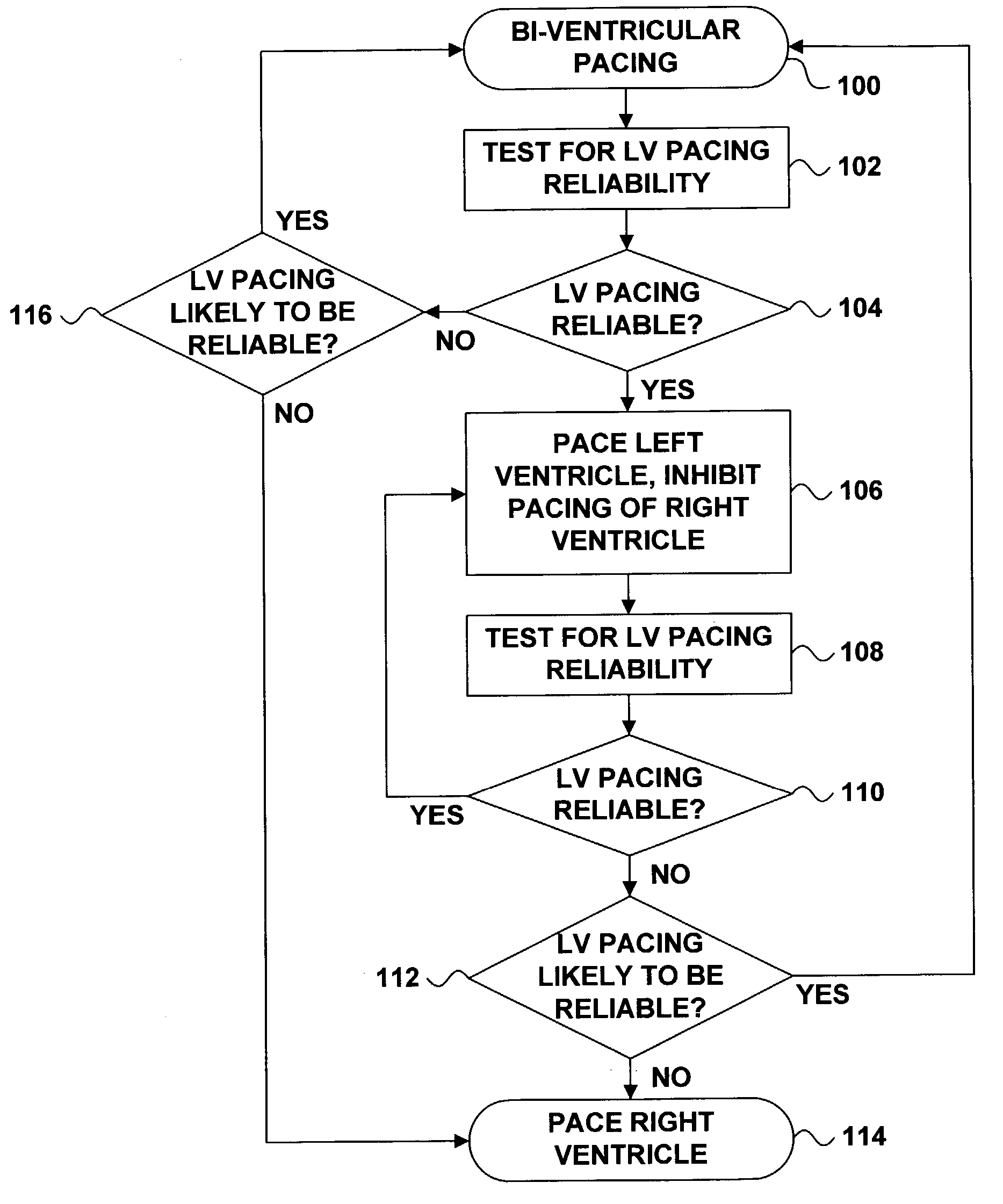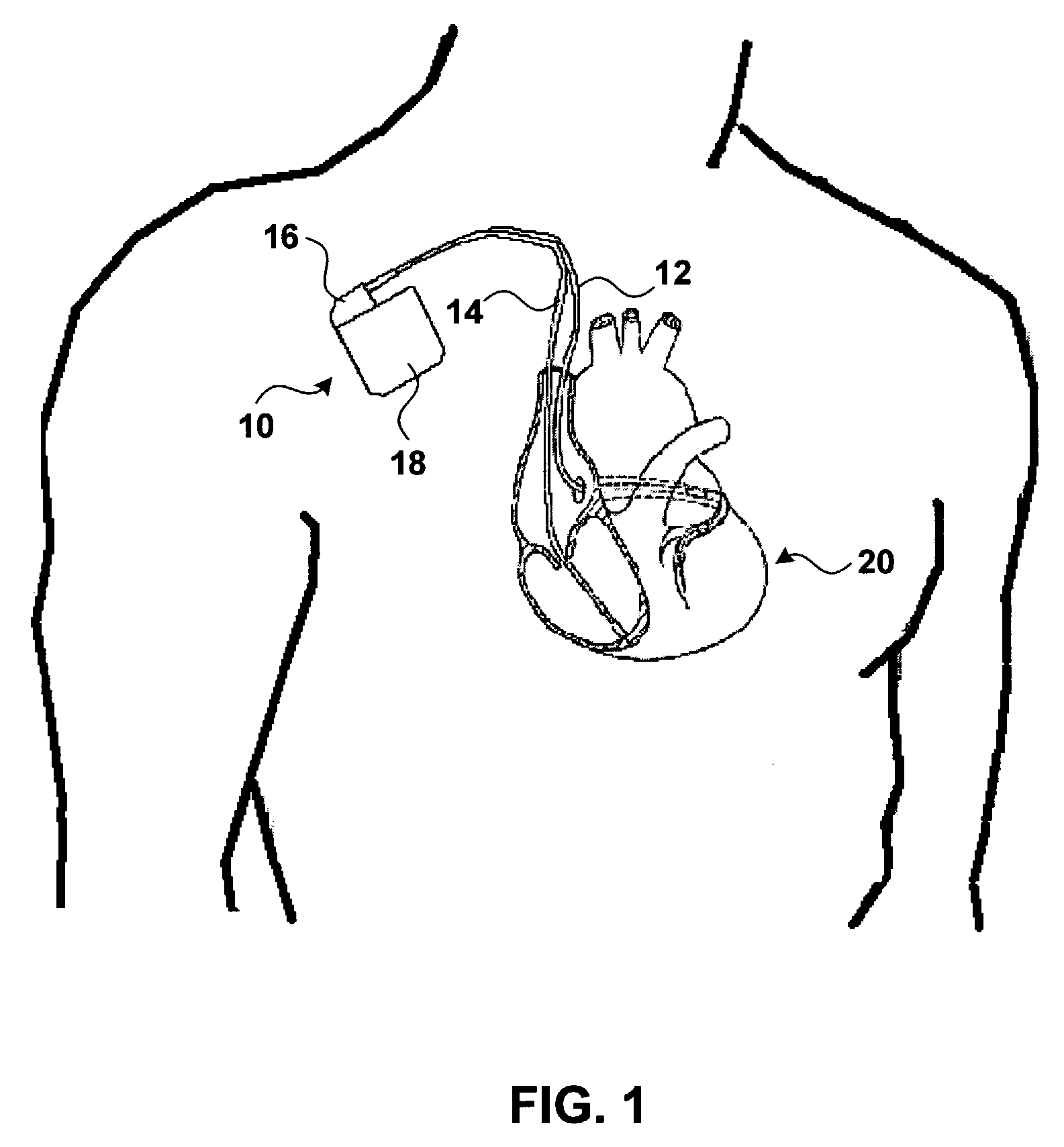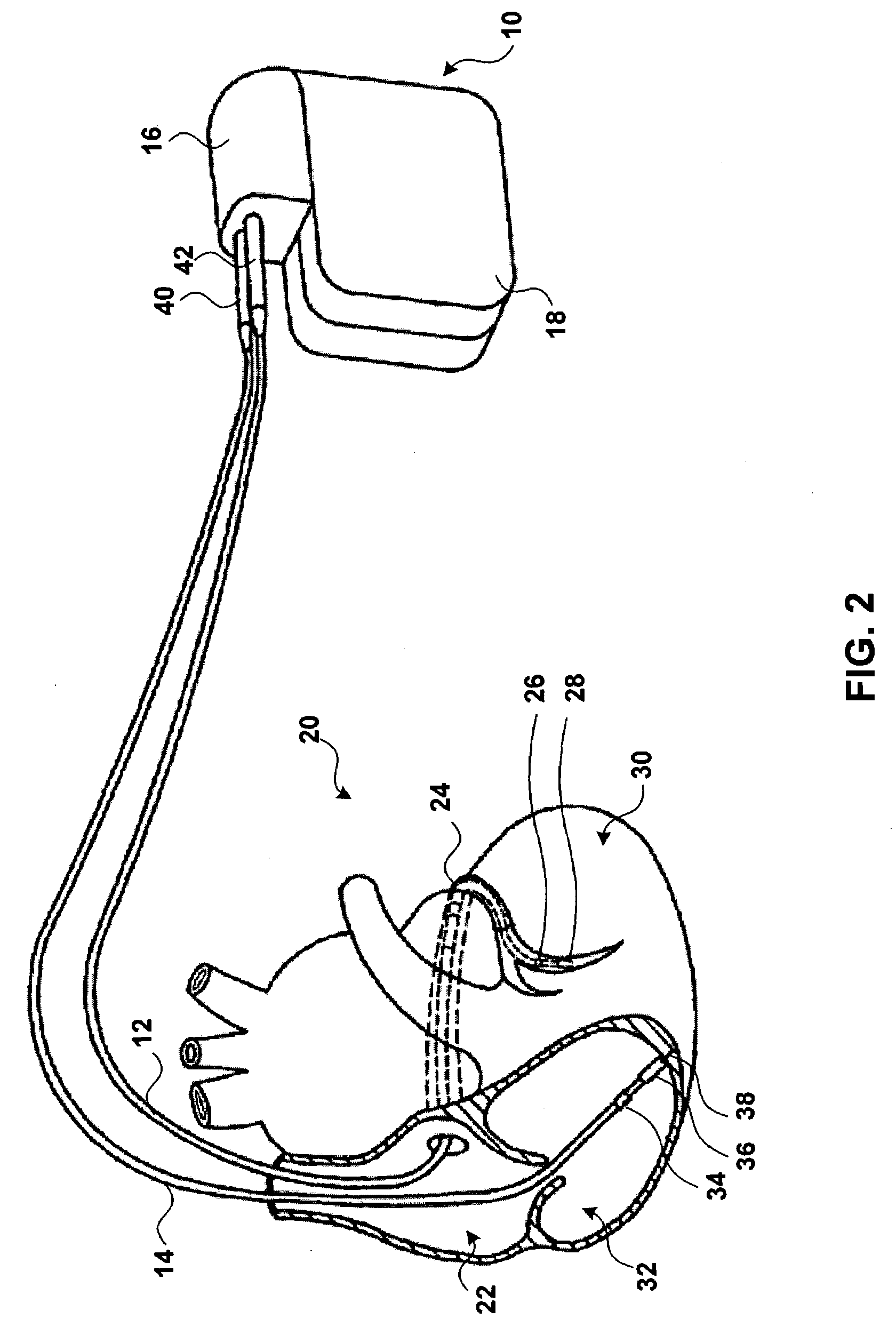Bi-ventricular and single-ventricle pacing
a pacing system and bi-ventricular technology, applied in electrotherapy, heart stimulators, therapy, etc., can solve the problems of failure of left ventricular pacing to “capture” the ventricles, failure of left ventricular pacing to activate the ventricles,
- Summary
- Abstract
- Description
- Claims
- Application Information
AI Technical Summary
Benefits of technology
Problems solved by technology
Method used
Image
Examples
Embodiment Construction
[0019]FIG. 1 is a schematic view of one embodiment of an implantable medical device (IMD) 10 that practices the invention. IMD 10 shown in FIG. 1 is a pacemaker coupled to at least one left ventricular pacing (LV) and sensing lead 12 and one right ventricular (RV) pacing and sensing lead 14. Pacing and sensing leads 12, 14 are attached to connector module 16 of hermetically sealed housing 18 and implanted near human or mammalian heart 20. Pacing and sensing leads 12, 14 sense electrical signals attendant to the depolarization and repolarization of heart 20, and further provide pacing pulses for causing depolarization of cardiac tissue in the vicinity of the distal ends thereof. Leads 12, 14 may have unipolar or bipolar electrodes disposed thereon.
[0020]FIG. 2 is a schematic exemplary representation of IMD 10 as an implanted, two-chamber cardiac pacemaker with bipolar leads. Bipolar, endocardial LV coronary sinus lead 12 is passed through the right atrium 22 of heart 20, into the cor...
PUM
 Login to View More
Login to View More Abstract
Description
Claims
Application Information
 Login to View More
Login to View More - R&D
- Intellectual Property
- Life Sciences
- Materials
- Tech Scout
- Unparalleled Data Quality
- Higher Quality Content
- 60% Fewer Hallucinations
Browse by: Latest US Patents, China's latest patents, Technical Efficacy Thesaurus, Application Domain, Technology Topic, Popular Technical Reports.
© 2025 PatSnap. All rights reserved.Legal|Privacy policy|Modern Slavery Act Transparency Statement|Sitemap|About US| Contact US: help@patsnap.com



